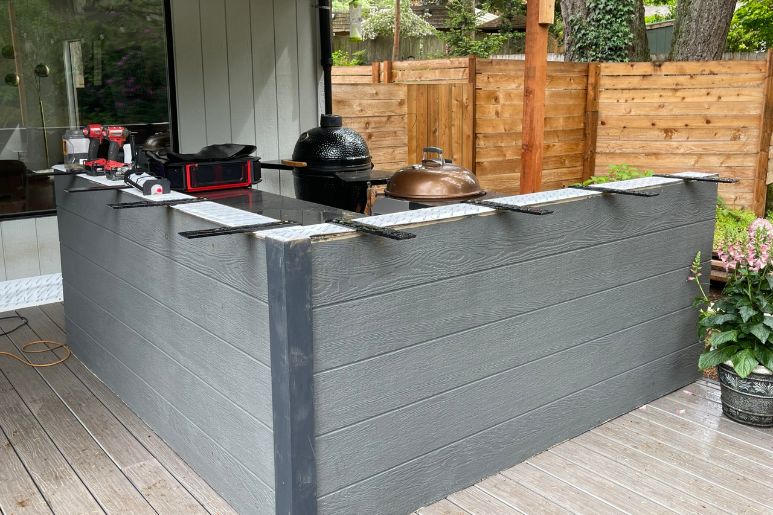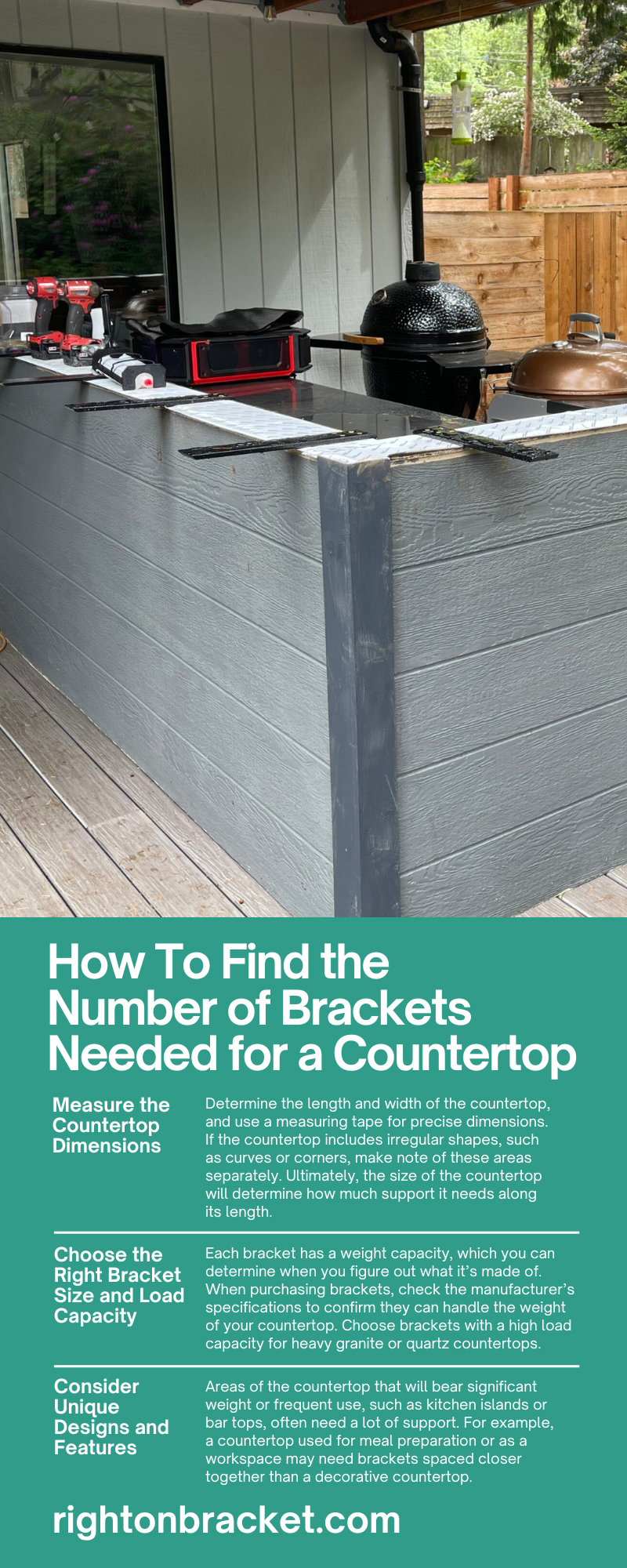
How To Find the Number of Brackets Needed for a Countertop
Installing a countertop is an essential part of any kitchen, bathroom, or workspace renovation. No matter which room you put countertops in, this addition needs support. One of the most crucial aspects of countertop installation is determining how many brackets you need to support the countertop. A countertop without adequate support can sag, crack, or collapse; this is particularly true for heavy materials, such as granite or quartz.
If you want to find the ideal number of brackets needed for a countertop, you’ll have to consider the brackets’ length, width, and thickness. Keeping these aspects in mind will help you make the best selections to keep your countertop secure and functional.
Measure the Countertop Dimensions
The first step is accurately measuring the countertop’s dimensions, which form the foundation of your calculations.
Length and Width
Determine the length and width of the countertop, and use a measuring tape for precise dimensions. If the countertop includes irregular shapes, such as curves or corners, make note of these areas separately. Ultimately, the size of the countertop will determine how much support it needs along its length.
Overhang Depth
In many cases, countertops extend beyond the cabinet or base structure, creating an overhang. Overhangs are typical with kitchen islands, breakfast bars, and workstations because they include space for seating.
Measure the depth of the overhang from the edge of the cabinet to the outermost point of the countertop.
Pro Tip
Overhangs greater than six inches typically require brackets for support to prevent sagging or structural damage.
Thickness of the Countertop
Thick countertops, especially those made from granite or marble, require more substantial support than thin laminate or wooden countertops. If you plan to install thick countertops, you’ll need thick, heavy-duty brackets to hold them. To determine the ideal thickness for the brackets, consider the following capacity differences in brackets of varying thickness:
- 1/4-inch-thick brackets are best for standard residential projects, light counters, and shelves that won’t hold significant weight.
- 3/8-inch-thick brackets suit residential and commercial applications and support most countertop overhangs, including stone, glass, or metal.
- 1/2-inch thick brackets can support counters or shelves that will hold heavy weight in commercial uses, those with long stone overhangs, or which people may use for sitting or leaning.
Understand the Material and Weight of the Countertop
The material and weight of your countertop will also determine the number of brackets you’ll need. Different materials have varying weight and strength requirements.
Heavier Countertops
Some of the heaviest countertop materials include the following:
- Granite
- Quartz
- Marble
- Concrete
These materials are durable but require robust support. For example, granite countertops can weigh between 18 and 20 pounds per square foot. A 96-inch-long countertop can easily weigh hundreds of pounds!In this case, you must space brackets appropriately to distribute this weight evenly.
Lighter Countertops
Laminate, butcher block, or medium-density fiberboard (MDF) countertops are significantly lighter than those made of stone. While they require less support overall, even bracket placement is essential to prevent sagging or warping, especially with significant overhangs.
Acquire Sturdy Brackets From a Reputable Supplier
Whether your home improvement project calls for heavy or light countertops, the brackets should be strong. Browse the handcrafted brackets for floating countertops at Right On Bracket. Our high-quality brackets give any countertop the support it needs.
Choose the Right Bracket Size and Load Capacity
Selecting the appropriate brackets is as important as determining the number of brackets required.Every countertop is different, so one type of countertop may need different brackets than another.Choosing the wrong bracket size or type could compromise the stability of your countertop.
Bracket Size
The size of the brackets should be proportional to the width of the countertop. To provide support, the bracket should cover at least two-thirds of the width of the countertop. For example, if your countertop is 24 inches wide, the bracket should be at least 16 inches long.
Load Capacity
Each bracket has a weight capacity, which you can determine when you figure out what it’s made of. When purchasing brackets, check the manufacturer’s specifications to confirm they can handle the weight of your countertop. Choose brackets with a high load capacity for heavy granite or quartz countertops.
Consider Unique Designs and Features
Countertops with unique designs or features may require additional brackets for support.
Curves and Angles
Curves can create stress points that require extra reinforcement. If your countertop has curved or angled sections, such as a rounded breakfast bar, you must strategically place brackets to account for the design elements.
High-Traffic Areas
Areas of the countertop that will bear significant weight or frequent use, such as kitchen islands or bar tops, often need a lot of support. For example, a countertop used for meal preparation or as a workspace may need brackets spaced closer together than a decorative countertop.
Install the Brackets Properly
Once you’ve determined how many brackets you need and the ideal sizes, hire professionals to install them correctly and safely. Experts generallyfollow the subsequent steps for a secure installation:
Mark the Placement
Installers will use a pencilor marker tonote where they’ll install each bracket along the underside of the countertop.
Pre-Drill Holes
A professional willpre-drill holes in the cabinet or base structure to make the installation easier and prevent splitting.
Attach the Brackets
Experts know how to screw in hardware and secure the brackets to the cabinet or wall. They will also confirm the hardware is level and firmly attached.
Check the Alignment
Installation professionals will double-check that they have the right alignment and spacingaccording to their calculations before placing the countertop.
Additional Steps for Care
When you rely on expert manufacturers like Right on Bracket, always refer to ourrecommendations for support and installation.
Use Reinforced Brackets
Consider using reinforced steel or aluminum brackets for added strength with heavy countertops.
Plan for Future Use
If you plan to use the countertop for heavy activities, such as cooking or hosting, ensure the support structure is strong enough to handle extra weight.
Prepare for Your Countertop Installation
Figuring out how to find the number of brackets needed for a countertopdoesn’t have to be complicated. Considering the support your countertop will need and consulting professionals for safe, secure bracket installation prevents issues and extends the lifespan of your countertop.
Whether you’re working with a heavy granite slab or a lightweight laminate, planning your support system will save you time and money while preventing potential problems and repairs in the future.



